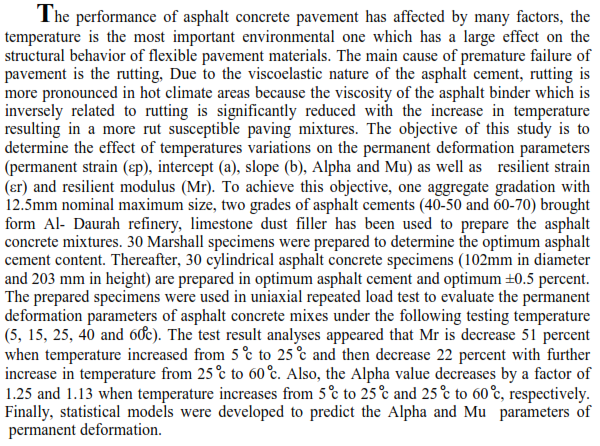


Experienced economic environmentRadical changes at the end of the last century and the beginning of the present century, resulting in new concepts and expectations in all aspects of economic, political, social and even behavioral.Each of these concepts is the result of rapid developments in the intangible space. Competition is no longer limited to the mere possession of tangible material resources, but because of its link to knowledge and technology content and to the comprehensive quality standards and efficient and effective policies of States. With the increasing pace of growth and interdependence among the global economies, this resulted in the birth of a new economic system led by technological development and financial liberalizati
... Show MoreIn light of the developments and intense competition that the world has witnessed, the need to search for a sustainable and continuous competitive advantage for economic units has emerged, as the economic units must not lose sight of their interest in the activities they perform to achieve that advantage, and it can be said that the goal of the research is to identify the theoretical dimensions of the green value chain represented by: (Green research and development, green design, green manufacturing, green marketing, green services) and the dimensions of the sustainable competitive advantage represented by (quality, creativity, innovation, cost, response to the customer), as well as identifyi
... Show MoreThe investment budget represents a stage of the investment decision in service units, and the preparation and implementation needs to be a complement of the same planning part, because the planning does not end with the development of the plan, but includes a follow-up implementation, so it has to be effective and efficient oversight of the estimates and procedures for disbursement of funds approved for investment projects, The problem with research in that local governments suffer from the presence of Allkaat and problems facing the implementation of the investment budget projects due to the adoption budget items which can not be measured the efficiency of the performance of these units of government by, and shortcomings in the control
... Show MorePublic budget is the government's tool in achieving the objectives of economic and social development is the accounting curriculum to estimate state revenues and expenditures for years to come, as well as to have legal status as it is after the adoption of an official statement of government units to spend funds on items planned at the same time is a statement collect resources to finance these appropriations, if the primary objective of the budget initially limited to the achievement of financial and legislative control have evolved this function in the area of public administration turned attention from mere imposition of control over the money, which provides information to assist the Department to utilize available resources and prog
... Show MoreDespite the great economic and commercial importance given to real estate by virtue of its view of the landscape or public roads, US courts have differed in their position on compensation for damages resulting from blocking that view or vision by public projects. Some courts compensated for such damages, other courts approved such compensation. Hence, this research came to shed light on the extent of the possibility of compensation for blocking the view or vision as a result of public projects, and the research has supported us with many judicial decisions.
Oil is considered the most important source for providing the funds for the national economic sectors. The revenues of oil constitute %95 of the GPD. Therefore, the development of the remaining sectors depend on oil..
The Iraqi Oil Marketing Organization (SOMO) depended on the a unified price for all the buyers, That may not reflect the real value of market and did not contribute in marketing the type of heavy oil. Then, to what extent had SOMO been able to market the light and heavy crude oil in a way that contains the expected increase in the crude oil production.
 (1)
(1)
In developing countries, conventional physico-chemical methods are commonly used for removing contaminants. These methods are not efficient and very costly. However, new in site strategy with high treatment efficiency and low operation cost named constructed wetland (CW) has been set. In this study, Phragmites australis was used with free surface batch system to estimate its ability to remediate total
petroleum hydrocarbons (TPH) and chemical oxygen demand (COD) from Al-Daura refinery wastewater. The system operated in semi-batch, thus, new wastewater was weekly added to the plant for 42 days. The results showed high removal percentages (98%) of TPH and (62.3%) for COD. Additionally, Phragmites australis biomass increased significant
 (6)
(6)
When sites of new communication occurs which represents the merit of the development of communication technology which is characterized by the services of ( facebook-twiter-corapora-youtube-mass space-friendster-flicker-willnecked in addition to the direct services for viber-whatsup-telgram-and chat on) play important role in changing the infrastructure of Arabic societies which are consideredas closed and not changeable societies during near period and the significance of this study comes from the importounce of this subject which is considered as anew trend of the age on the field of media and public response and acceptance inspite of what is known about Arabic society-it doesn’t accept change-this occurance is associated with terms
... Show More (45)
(45)
 (42)
(42)
The UN plans to achieve several development objectives by 2030. These objectives address global warming, a major issue. This method aims to improve sustainable accounting performance (AP). In this circumstance, AI is being applied in various fields, notably in economic, social, and environmental (ESE) domains. This research investigates how sustainable development (SD) influences AI methodologies and AP improvement. The research examined a sample of Iraqi banks listed on the Iraq Stock Exchange from 2014 to 2022. AI was measured by ATM and POS prevalence. A three-dimensional approach examined economic, social, and environmental (ESE) sustainability. Meanwhile, the performance of sustainable accounting was measured through the return on asse
... Show More (1)
(1)